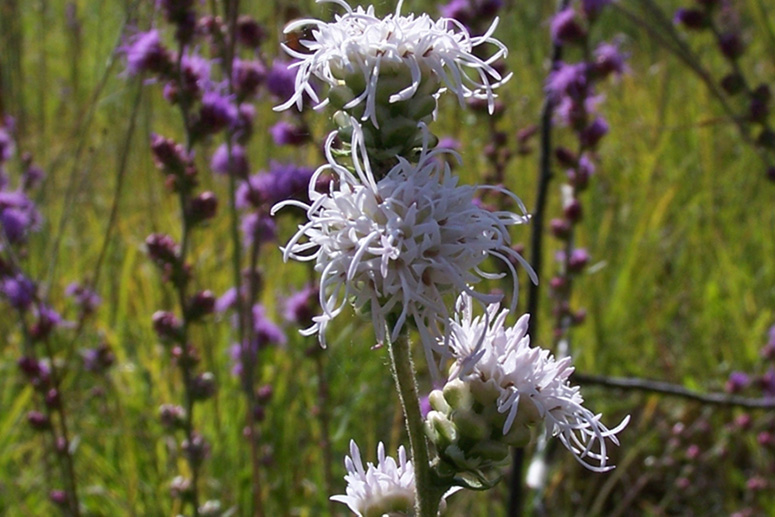
Pictures and Text by Tom Schroeder
When you wander the wild areas in Kansas City you see a great deal of diversity. There are hundreds of species of plants, invertebrates, birds and mammals to encounter. Some surprise you.
You are out looking for Blue Pitcher Sage and in front of you is what looks like the plant but the flower is the color white. Blue Sage name but white color?

You could also be looking for purple Rough Blazing Star and there is the plant form but in a white color. What?

Plants produce anthocyanins, small molecules that can form red, blue, or in between tints, to color flowers. Genes produce enzymes that produce the anthocyanins to determine the color. This is the simple way to explain the Anthocyanin Pathway. White flowered plants cannot produce anthocyanins because something in the pathway gets broken.
The white forms are rare in the wild. Studies show they are likely caused by a recessive genetic mutation. The white forms may not have the vigor of a normal colored plant which keeps them rare.
You do not have to know the reasons for the variation to be surprised and delighted by it. If you look around the wild areas you may be surprised by a white flowered Monarda fistulosa Bee Balm Mint plant which usually has purple flowers.

A great place to find these unusual colored plants is at Jerry Smith Park Prairie in south Kansas City. You could also find white forms of Pale Purple Coneflower, Eared False-Foxglove, or Prairie Phlox which are usually pink. See what discoveries you can make this summer.







